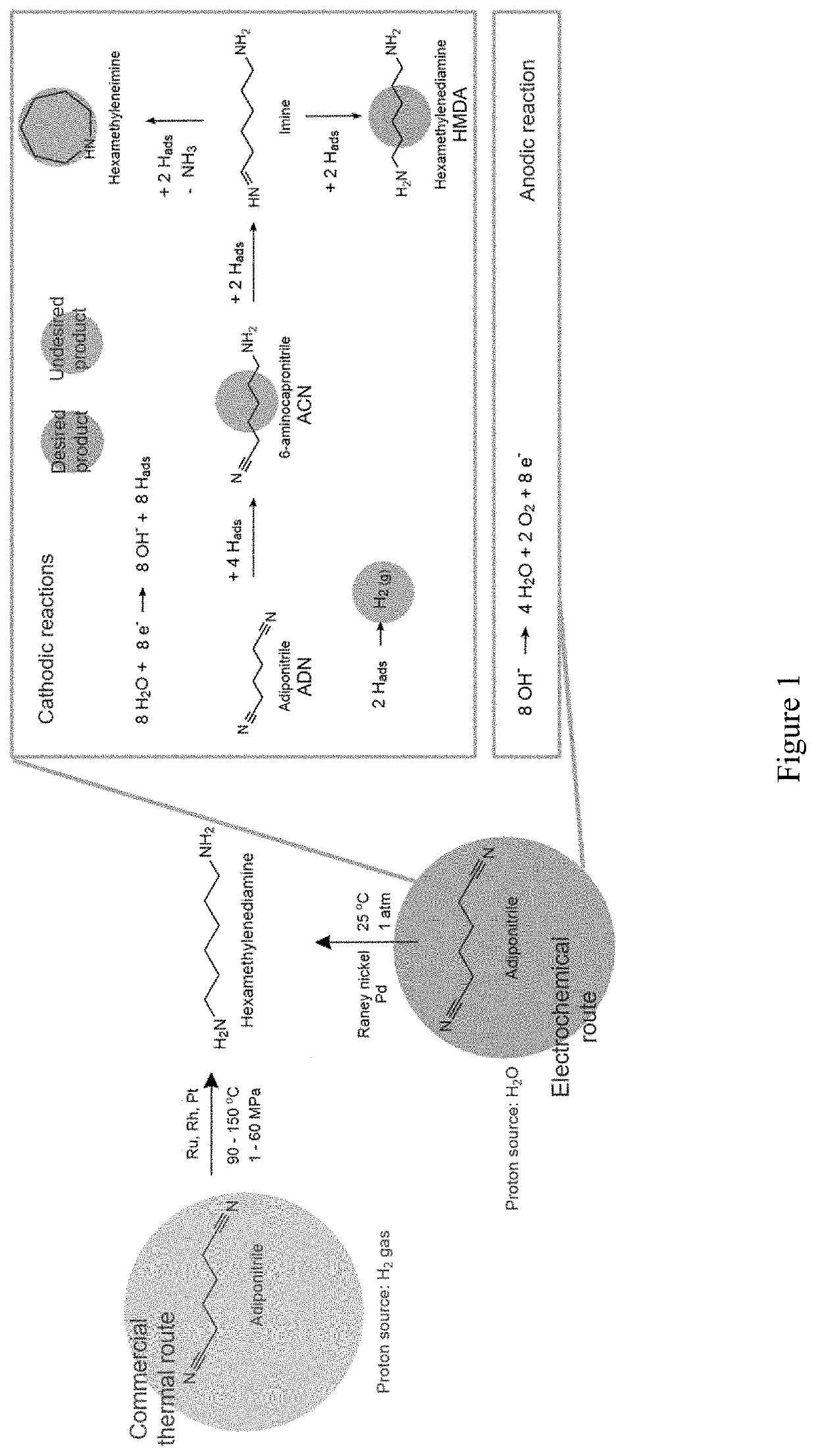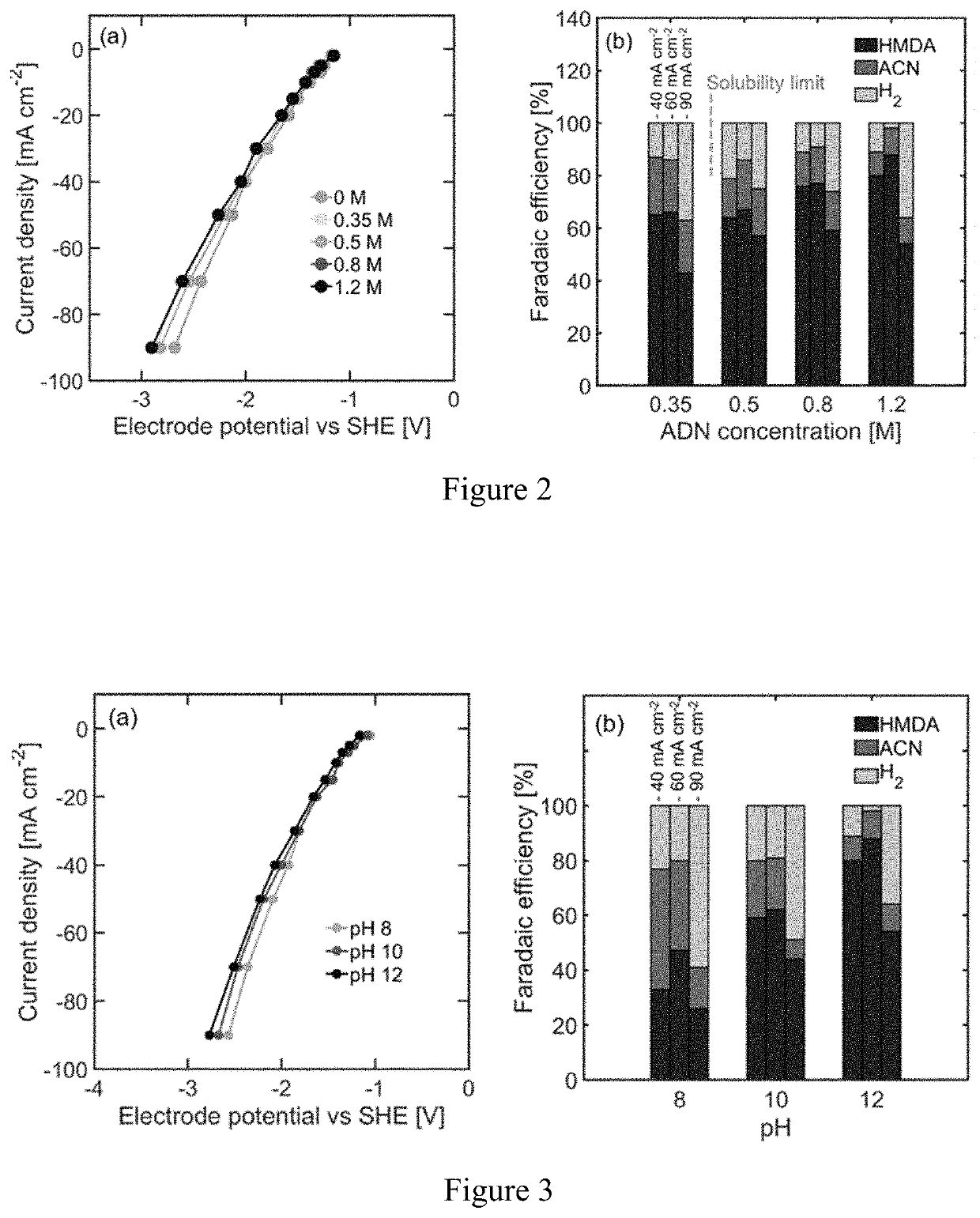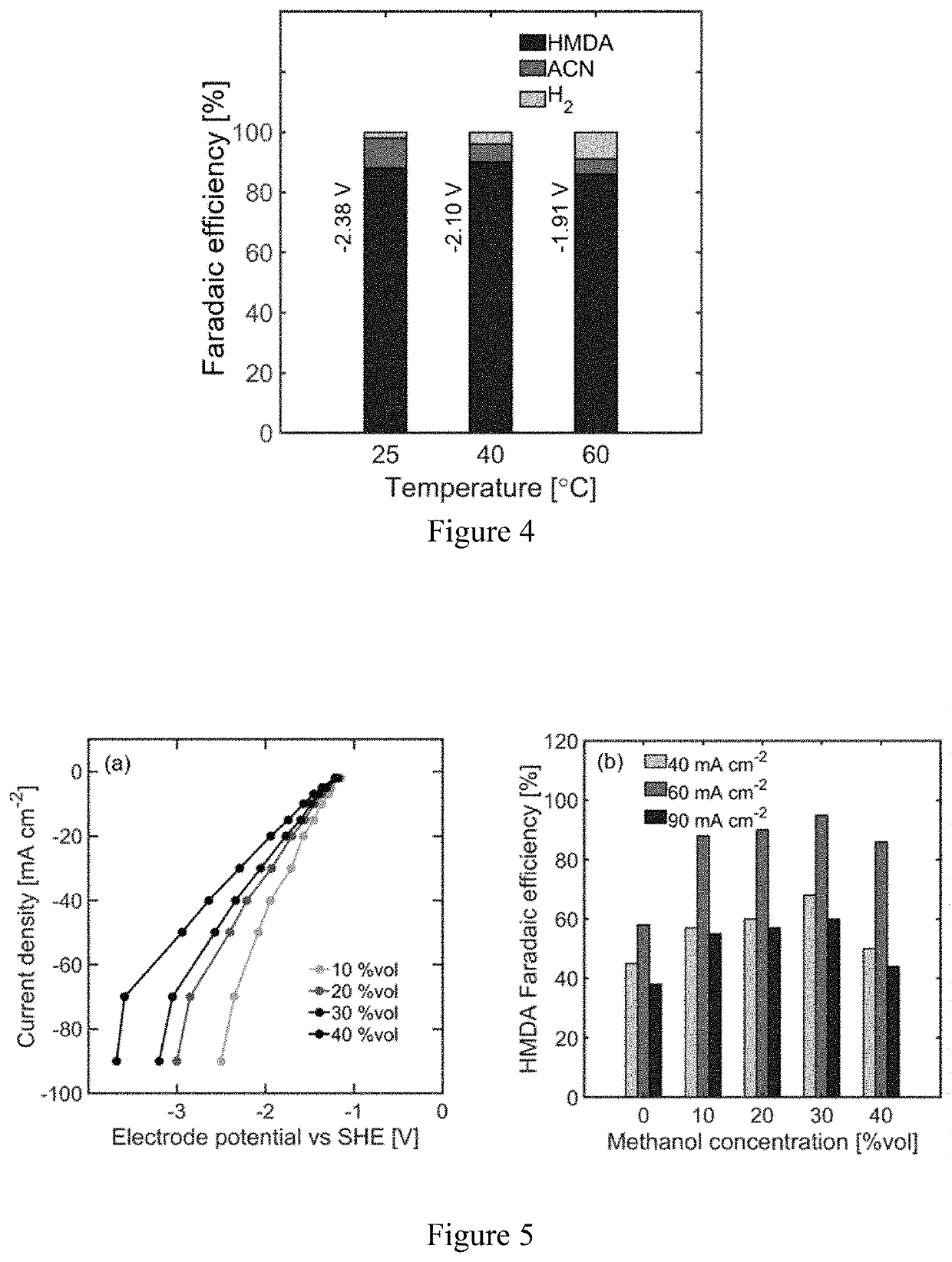Electrohydrogenation of nitriles
- Summary
- Abstract
- Description
- Claims
- Application Information
AI Technical Summary
Benefits of technology
Problems solved by technology
Method used
Image
Examples
example
[0056]This example provides a description of methods and compositions of the present disclosure.
[0057]Using the hydrogenation of adiponitrile to hexamethylenediamine (HMDA), a monomer used in the production of nylon-6,6, the effect of reactant concentration, temperature, pH, and organic cosolvents on the ECH of nitrile groups with Raney nickel electrodes was investigated. Higher reactant concentrations, alkaline electrolytes, and mild temperature (40° C.) are key conditions that enhance the hydrogenation of organic substrates against hydrogen evolution. A maximum faradaic efficiency of 92% toward HMDA was obtained in aqueous electrolytes at −60 mA cm−2. The addition of an organic cosolvent is subsequently studied to evaluate the effect of enhanced reactant solubility, achieving a 95% faradaic efficiency at the same current density with 30% methanol by volume in water. The insights gained from this study are relevant for the design of energy efficient organic ECH and can help acceler...
PUM
 Login to View More
Login to View More Abstract
Description
Claims
Application Information
 Login to View More
Login to View More - R&D
- Intellectual Property
- Life Sciences
- Materials
- Tech Scout
- Unparalleled Data Quality
- Higher Quality Content
- 60% Fewer Hallucinations
Browse by: Latest US Patents, China's latest patents, Technical Efficacy Thesaurus, Application Domain, Technology Topic, Popular Technical Reports.
© 2025 PatSnap. All rights reserved.Legal|Privacy policy|Modern Slavery Act Transparency Statement|Sitemap|About US| Contact US: help@patsnap.com



